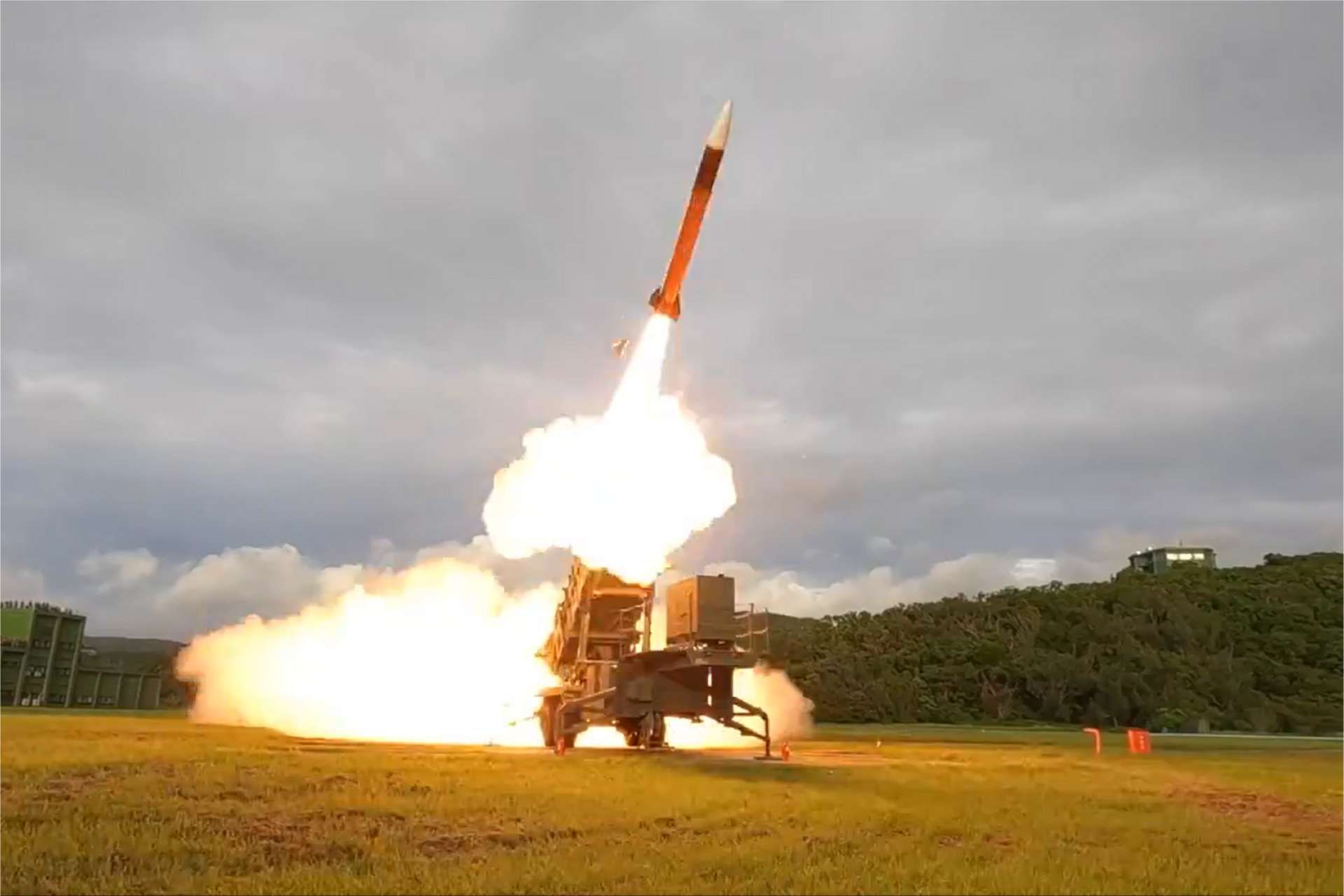Breaking News
Taiwan strengthens its defense capabilities with live-fire Patriot PAC-2 missile exercise.
On August 20, 2024, Taiwan conducted a large-scale military exercise at its Jiupeng military base in Pingtung County, located in the southern part of the island. During this exercise, two U.S.-made Patriot PAC-2 missiles were successfully launched. This event was part of a broader demonstration of Taiwan's military power as tensions with China continue to escalate. Beijing, which considers Taiwan a breakaway province, has intensified its military activities around the island, prompting Taiwan to bolster its deterrence capabilities.
Follow Army Recognition on Google News at this link

The PAC-2, or Patriot Advanced Capability-2, is an air defense system designed to operate in all weather conditions and at all altitudes. (Picture source: Taiwanese Media)
The PAC-2 missiles are particularly effective in intercepting ballistic missiles. They were launched alongside Sky Bow III anti-ballistic missiles developed locally in Taiwan. The targets, located about 30 kilometers off Taiwan's eastern coast, were all hit, demonstrating the precision and preparedness of Taiwan's armed forces. According to Colonel Kao Shu-li, the spokesperson for the exercise, the objective of this training was to test the effectiveness of both the weapons systems and the soldiers in a joint air defense scenario. The decentralized command model used in the exercise aims to improve responsiveness and coordination of forces in real conflict situations.
A response to increasing Chinese pressure
This exercise took place in the context of increased military pressure from China, which has been intensifying its maneuvers near Taiwan. Beijing regularly sends warplanes and naval vessels near Taiwan’s coast in what many see as an intimidation tactic. These activities have prompted Taiwan to review its defense strategy and increase its military spending. Under President Lai Ching-te's leadership, the Taiwanese government recently announced a 6% increase in the defense budget for 2025, raising it to 647 billion Taiwanese dollars (approximately 19.8 billion U.S. dollars).
The use of PAC-2 missiles, supplied by the United States, is part of a broader strategy to diversify Taiwan’s weapon systems. In addition to locally manufactured weapons, Taiwan continues to procure advanced military equipment from its allies, particularly the United States. This strategic partnership is crucial for the island, which strives to maintain a military balance against China's growing power.
A mediated show of force
The August 20 exercise also marked a rare opening to the press. It had been twelve years since Taiwan's Ministry of Defense last invited the media to witness such a show of force. This increased transparency is likely intended to send a strong message not only to the Taiwanese population but also to the international community. Taiwan seeks to demonstrate that it is ready to defend its sovereignty against external threats.
Ministry of Defense spokesperson Sun Li-fang emphasized that the exercise allowed for the verification of the weapons systems' effectiveness and the solid training of the soldiers. The missile launches were carried out under conditions close to real combat, which validated the operational capabilities of Taiwan's armed forces. This show of force also comes as Taiwan intensifies its contacts with unofficial allies, such as Japan and South Korea, to strengthen its international support network.

During the exercise, two U.S.-made Patriot PAC-2 missiles were successfully launched. (Picture source: Taiwanese Media)
What is the PAC-2?
The PAC-2, or Patriot Advanced Capability-2, is an air defense system designed to operate in all weather conditions and at all altitudes. This missile, weighing about 900 kg and measuring 5.8 meters in length, can destroy long-range aerial targets up to 70 km away. The system is used by many countries around the world, including the United States, Germany, Israel, Japan, Taiwan, and many others, attesting to its reliability and effectiveness.
The PAC-2 is equipped with a 90 kg warhead, composed of M248, a powerful explosive used in fragmentation charges. This warhead is designed to maximize damage with two layers of preformed fragments and an Octol 75/25 explosive composition, optimized for fragmentation explosions. This type of charge creates a large destruction zone, increasing the chances of neutralizing a target.
One of the most sophisticated aspects of the PAC-2 is its guidance system, based on a passive electronically scanned array (PESA) radar. This radar is equipped with advanced electronic counter-countermeasures (ECCM) and a "Track-Via-Missile" (TVM) guidance subsystem, ensuring precise target tracking until impact. This system is coupled with the AN/MPQ-53 or AN/MPQ-65 radar, which is part of a suite of systems including the AN/MSQ-104 Engagement Control Station, the OE-349 Antenna Mast Group, and the EPP-III Electric Power Plant. Together, these components ensure the detection, tracking, and interception of aerial threats with great efficiency.
A strengthened deterrence strategy
In response to the growing power of the Chinese military, Taiwan is focusing on a deterrence strategy based on modernizing its weapons systems. Missiles, whether locally manufactured or imported, play a key role in this strategy. Taiwan has also extended the duration of mandatory military service from four months to one year to better prepare its population for a possible confrontation with China.
The August 20 exercise is a reminder of the tense geopolitical situation Taiwan finds itself in. As Beijing continues to claim sovereignty over the island, Taiwan is bolstering its defense and seeking to maintain the support of its international allies, particularly the United States. Taiwan's military actions, coupled with active diplomacy, aim to deter any attempt by China to take control of the island by force.


























